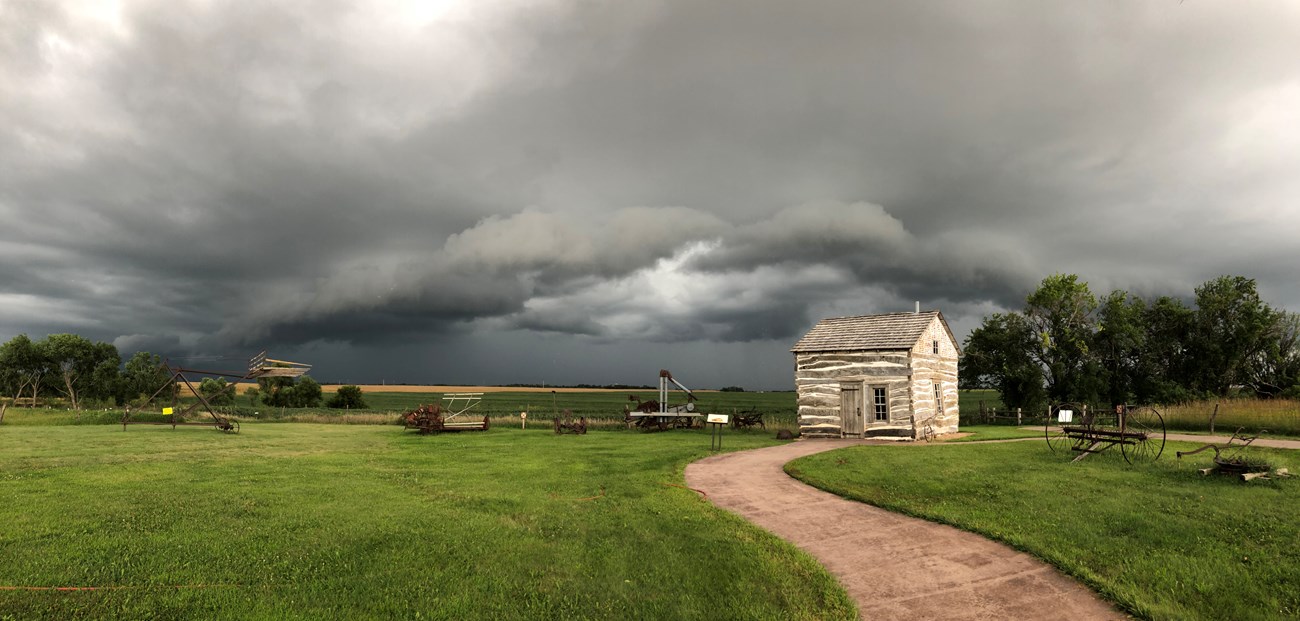Last updated: April 22, 2020
Article
Climate and Crops on the Homestead: What Will Grow?

Let's pretend you filed a claim under the Homestead Act of 1862.
Under this law you could claim 160 acres of "free" land, if you were willing to do the work to meet the requirements for claiming the land. These requirements were:
2. You had to be a United States Citizen, or intend to become one
3. You needed to live on the land for 5 years, cultivate it, and build a home
Because you had to live on the land for 5 years, it was very important to be near the resources you need to meet the residency requirement. Food and water meant success on your homestead. Hunting was used as a quick solution to getting food, but growing crops became a neccesity for many as well. Obtaining water was a primary need for both sustaining crops and the lives of the homesteaders themselves. The fastest-moving settlers staked their claims near rivers, streams, or springs, but these desirable "waterfront" homesteads quickly became unavailable.
On those homesteads where water was not always available, close attention was paid to when crops were planted, where they were planted, and what alternative ways could be used to get water to the crops. Information on average rainfall and temperature, growing times, and frost and freeze dates, became very useful information to homesteaders working to maintain their farms, and meet the 5 year requirement on their homestead.
Lets look at this information below and see how it can be used on the homestead. The states shown below in brown are the 30 homestead states.

Will crops grow the same throughout these states?
Let's take a look.
Average Rainfall and Temperature
Using the slide below, examine the average temperature and rainfall in the United States. Slide right for rainfall, and left for temperature.
How might the average temperature in the state change what you are able to grow on your homestead? What about average rainfall?


Left image
US Average Precipitation Values
Right image
US Average Temperature Values
Growing Seasons
Homesteader advice! Explore all of your options before you choose. Pay attention to how long each crop will take to grow, what soil temperatures they will need to be planted in, and if they will survive the cooler nights on your homestead.
Planting a field of corn? Learn more.


Left image
Cornfield
Right image
Slide to reveal
Want to grow oats? Learn more.


Left image
Oats
Right image
Slide to reveal
The choice is yours. Growing potatoes? Learn more.


Left image
Potatoes
Right image
Slide to reveal
Spring wheat it is! Learn more.


Left image
Spring wheat
Right image
Slide to reveal
Will it grow?
Using the new information you learned about growing crops on your homestead, follow these steps to explore how your crop would do in the area you chose for your claim.
2. Find the average rainfall and temperature in the state you chose.
3. Using the crop you selected, compare its needs, to the temperature and rainfall for the state your homestead is in.
4. Do you think your crop will grow in the state you chose? Why or why not?
